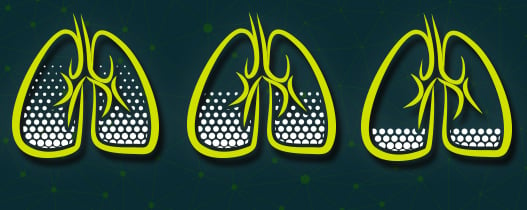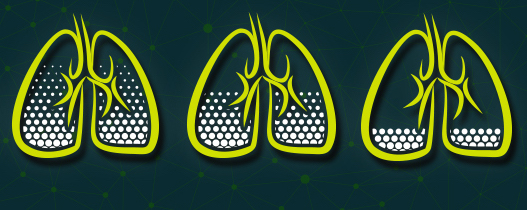Chronic obstructive pulmonary disease is a slowly progressive disease so it is not unusual for the initial signs and symptoms to be a bit different from those in the late stages of the disease. There are many ways to evaluate or stage chronic obstructive pulmonary disease, often based on symptoms.

The most significant symptom of chronic obstructive pulmonary disease is breathlessness, termed shortness of breath (dyspnea). Early on, this symptom may occur occasionally with exertion and eventually may progress to breathlessness while doing a simple task such as standing up or walking to the bathroom. Some people may develop wheezing (a whistling or hissing sound while breathing). Signs and symptoms of the chronic obstructive pulmonary disease include:
- Cough, with usually colorless sputum in small amounts
- Acute chest discomfort
- Shortness of breath (usually occurs in patients aged 60 and over)
- Wheezing (especially during exertion)
As the disease progresses from mild to moderate, symptoms often increase in severity:
- Respiratory distress with simple activities like walking up a few stairs
- Rapid breathing (tachypnea)
- Bluish discoloration of the skin (cyanosis)
- Use of accessory respiratory muscles
- Swelling of extremities (peripheral edema)
- Over-inflated lungs (hyperinflation)
- Wheezing with minimal exertion
- Coarse crackles (lung sounds usually with inspiration)
- Prolonged exhalations (expiration)
- Diffuse breath sounds
- Elevated jugular venous pulse
The Four Stages of COPD
One way to stage chronic obstructive pulmonary disease is the Global Initiative for Chronic Obstructive Lung Disease program (GOLD). The staging is based on the results of a pulmonary function test. Specifically, the forced expiratory volume (how much air one can exhale forcibly) in one second (FEV1) of a standard predicted value is measured, based on the individual patient's physical parameters. The staging of chronic obstructive pulmonary disease by this method is as follows:
- Stage I is FEV1 of equal or more than 80% of the predicted value
- Stage II is FEV1 of 50% to 79% of the predicted value
- Stage III is FEV1 of 30% to 49% of the predicted value
- Stage IV is FEV1 of less than 30% of predicted value or an FEV1 less than 50% of predicted value plus respiratory failure
Other staging methods are similar but are based on the severity of the shortness of breath symptom that is sometimes subjective. The above staging is measurable objectively, providing the patient is putting forth their best effort.
Based on your stage and how you are handling your symptoms, you may need help coping with the issues surrounding COPD. COPD may impact your ability to do some of the things you have enjoyed or it may make it more difficult to do these things. Weather conditions that trap air pollutants may cause flare-ups or make your condition worse. Overall, if you start to see things get worse and you are progressing through the stages, follow your doctor’s advice.
For additional information on COPD, check out our website!
Resources
Medical News Today
Mayo Clinic
Medicine Net
National Institute on Health
American Lung Association
Lung Health Institute





